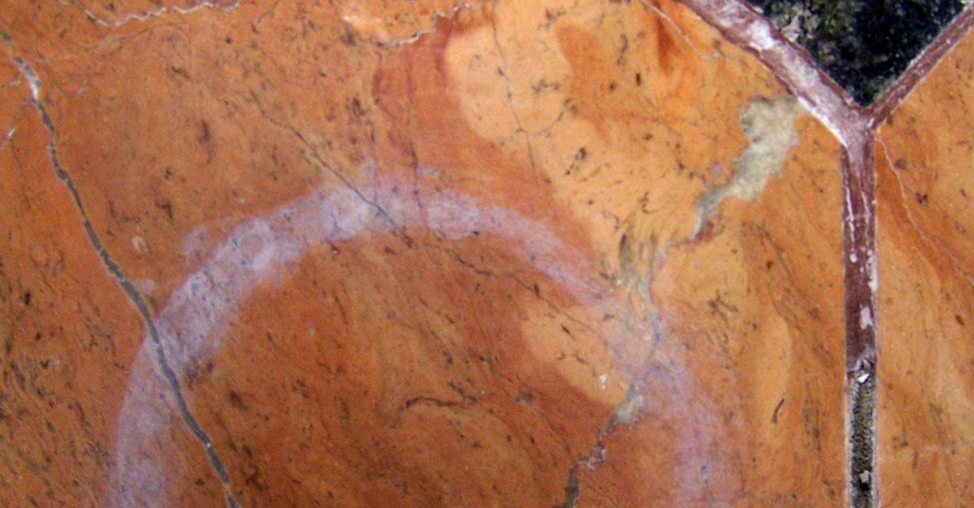Read Our Reviews!

What’s with that white dirt you keep seeing on your marble countertop? No matter how many times you wipe it away, it shows up again and again! Well, wonder no more. What you’re seeing isn’t actually dirt, but rather damage to your marble due to etching. No worries! MARBLELIFE® can easily help you get back to a flawless, white-dirt-free surface.
So what exactly is etching? Since marble is a relatively soft stone, it’s prone to etching due to its calcium carbonate makeup. When acid reacts with that calcium carbonate, it will eat away tiny bits of the surface. And when this happens, you may see what looks like white dirt on your marble surface. Damaged marble looks white. But it’s not a stain; it’s actually the stone itself being changed to a salt, and after enough wiping's, it is literally dissolved away leaving a white gap in the stone. Light etching you can see, heavy etching will feel rough to the touch. Marble etching requires a restoration service to “clean” or restore the marble’s natural polished color.
You are not alone. This is the number one reason why marble owners will call MARBLELIFE® for service to eliminate this kind of blemish or eyesore. It is the high contrast of these issues with the rest of the surface that screams, “Do something now!” to many homeowners. Usually, these marks are due to accidents (spills, acidic liquids, inappropriate acidic cleaners) rather than from natural wear.
Marble etching can take a variety of forms based on the event that created them, but they’re all based on the same underlying problems:
Rings: These are caused by either drinks that have a spritz of lemon or the remnants of acidic dishwashing detergent that are still on the glass. Thanks to condensation on an ice-filled glass, the “sweat” on the glass mixes with the acid from the detergent and burns the surface. The reason we see this so often is that this type of detergent is pretty common—the acid dissolves the calcium in the water, which would otherwise become a hard water stain on your glass, which is good for cleaning dishes, but bad for your countertop.
Spills: The more acidic the drink, the worse the effect of spills on your marble countertop. If you accidentally knock over a glass of lemonade, bottle of salad dressing, or a can of soda, leaving the liquid pooled on the counter too long can leave visible etching on the surface in the form of a spill mark.
Tear spots: Just the tiniest spritz of lemon can create a teardrop-shaped etch as it hits the surface based on its direction of travel.
General dullness: Clean a marble floor with vinegar, and the dullness you’ll eventually see is actually a light etch across the entire surface of the floor.
Wax: Guess what’s generally under wax? Marble etching that someone is trying to hide. Wax can temporarily restore gloss – as long as no one walks on it. But it will scuff and dull faster than stone, which will result in necessary stripping and re-applications until the homeowner finally just gives up and has it repaired.
If you want to avoid etching altogether, buy granite. Granite is impervious to acids, making it the best countertop selection from a usability stand point. But if you’re already dealing with any of the above issues, know you don’t have to sacrifice those elegant counters. The simple solution is to call your local MARBLELIFE® restorer!
Call MARBLELIFE at (888) 524-3372 or visit us online to secure your FREE ESTIMATE at www.MARBLELIFE.com or to www.MARBLELIFEPRODUCTS.com to secure the care products appropriate to your surface, and your desire for an easy effective cleaning solution.